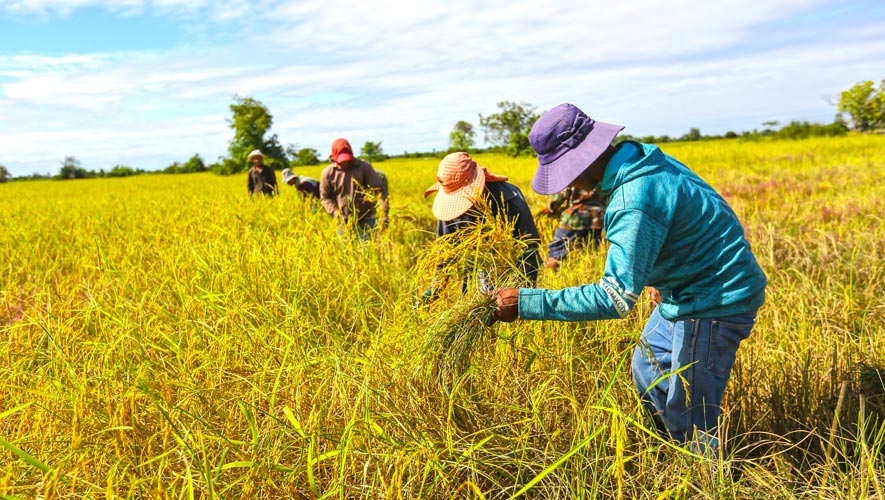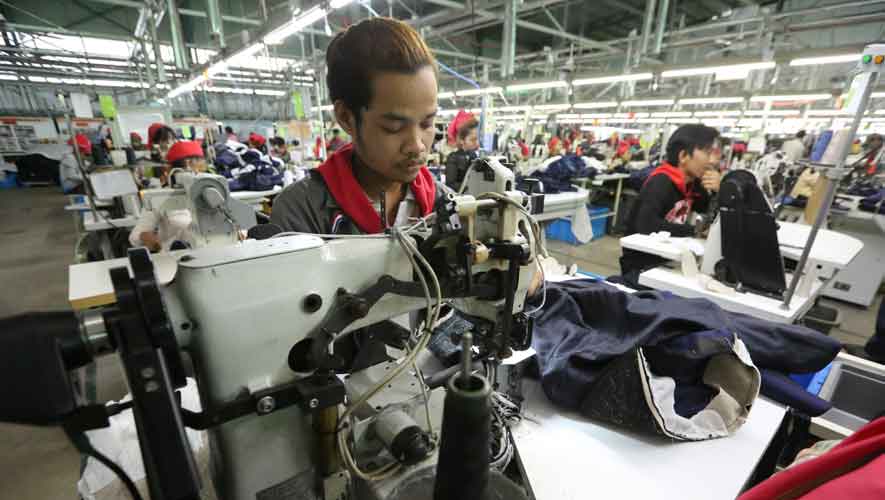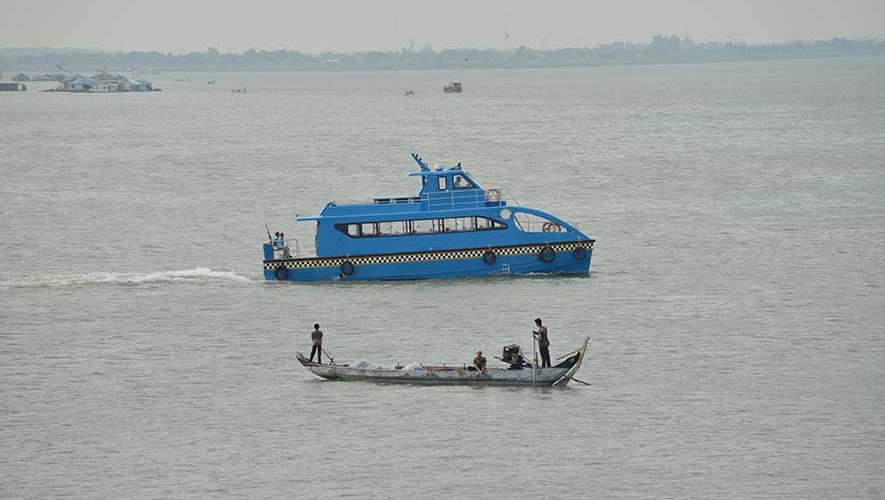Falling exports prompting farmers, exporters to find ways to ensure sustainability of rice bowl
For the latest Cambodian Business news, visit Khmer Times Business
Ongoing price wars and the recent rice tax imposition on Cambodia by the European Union (EU) are threatening Cambodia’s long grain white rice variety which could experience a slowdown in exports in the near to mid-term.
This is compounded by the lack of access to new markets that could have made up for the waning exports to the EU.
As it stands, export figures for this variety fell 27 percent to 39,854 tonnes in the first half of this year compared with 56,637 tonnes in the corresponding period last year.
Data from the Secretariat of One Window Service for Rice Export also showed that the parboiled white rice variety dropped dramatically to 4,587 tonnes from January to June this year versus 17,242 tonnes a year ago.
Grim figures
In 2018, Cambodia exported 626,225 tonnes of milled rice, two-thirds of it being fragrant rice (493,597 tonnes), and the rest consisting of long grain white rice and parboiled rice.
However, figures for the first eight months of 2019 seem grim as reflected by the official data when Cambodia shipped only 341,045 tonnes of milled rice from January to August, with 286,573 tonnes of that comprising fragrant rice.
Price competition
In the past, Cambodia had taken pride in its export of good quality Indica rice including IR49, IR66, Neang Khon and Neang Minh, but Seu Rany, president of Farmer and Nature Net (FNN), says that the cultivation of this variety has become less popular among farmers because of the price competition with major players such as Thailand and Vietnam.
It should be noted that Cambodia started planting IR51 and IR54, a soft-cook white rice variety popular in China, this year after procuring seeds for it from its native Vietnam.
“For now, our IR variety exports are mainly to Vietnam and China,” Rany says.
“The price of Cambodian variety is $450 per tonne now while rice from Thailand, Vietnam, and Myanmar ranges between $390 to $410 per tonne.”
Hit by tariffs
Amru Rice (Cambodia) Co Ltd Vice-President Kann Kunthy rues that the EU safeguard clause which came into effect on Feb 19 resulted in the exporter reducing its long grain white-rice shipment since March before stopping exports altogether to the EU.
The bloc imposed a regressive rice tax regime on Cambodia and Myanmar for three years beginning with 175 euros per tonne in 2019, followed by 150 euros per tonne in 2020 and 125 per tonne in 2021.

Local white rice costlier
Signatures of Asia Co Ltd General Manager Chan Pich says that Cambodian white rice is $40 to $60 higher per tonne compared with Vietnam, Thailand and Myanmar because of the rice duty.
Currently, the Philippines and Indonesia consume long-grain white rice and they have placed orders of between five and 25 percent in the market once they run out of stock.
Kann says with the drop in white rice demand by the EU, farmers and rice millers are selling the excess harvest to Vietnam which has started cultivating fragrant rice.
It was not much keen on doing so before. In any case, Kann opines that white rice is not strategic for export because Cambodia often lost out to Thailand and Vietnam in securing bids to ship rice to Indonesia and the Philippines.
To make matters worse, China, which has a surplus of white rice, is selling the produce at $330 per tonne in the global market, inadvertently hitting Cambodia.
“In my opinion, Cambodia should not grow white rice [apart from IR51 and IR54] because it is not competitive in the global market.
“It is not the issue of price alone but also logistical costs and electricity tariffs which make Cambodian white rice unpopular [in the open market],” Kann stresses.
Shifting trends
As such, he suggests that areas and soil that are suitable for white rice cultivation should be transformed into IR51 and IR54 rice fields to cater to the Chinese market.
“China wants to purchase this rice variety from Cambodia because of an ongoing issue with Vietnam,” he says.
“In fact, between January and August this year, out of 133,106 tonnes of milled rice exports to China, half was made up of the Vietnamese varieties.”
Fragrant variety
FNN, which represents 76 agriculture cooperatives in the country, found that 30 percent of IR rice farmers have shifted rice cultivation to Sen Kro Ob, a fragrant long grain rice variety that only requires three months and 15 days to grow.
“This fragrant rice variety, including premium Jasmine rice [‘Neang Malis’, ‘Malis’, ‘Somaly and ‘Phka Rumduol’], has better demand in the global market and is competitively priced.
“We encourage them to grow the Sen Kro Ob variety during the dry season. This has to be based on market demand,” Rany says.
From January to June 2019, exports of premium Jasmine rice and fragrant rice rose 16 percent to 237,697 tonnes from 205,658 tonnes in the same period last year.
Meeting China’s palate
Cambodia Rice Federation President Song Saran says the association would conduct a study on the acreage required to grow premium fragrant rice “Malys Angkor”, regular fragrant variety “Sen Kro Ob” and medium to long grain white rice species.
Plans are also afoot for cooperation with the Agriculture Ministry and China to determine the suitable variety that can meet China’s palate.
“Having said that, we are continuing our efforts to strengthen the existing market, particularly the EU, even though exports have fallen,” Song adds.
“Our main market used to be Europe, where we enjoyed a tariff-free access from September 2009,” Song says.
A big importer
Recently, China has become a big importer but the latter has high demands for the soft-cooking white rice variety. This demand is being met slowly, he adds.
As of September this year, Cambodia registered 2.53 million hectares of paddy fields.
Premium fragrant rice fields take up 2.76 million ha while 772,154ha is of the short-term white rice variety.
Rice is the most widely eaten staple food in the world.




